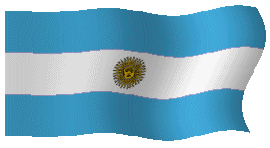
B"H
Jewish  Tours
Tours
 Buenos Aires, Argentina
Buenos Aires, Argentina

|
What is Travelers’ Choice?
Tripadvisor gives a Travelers’ Choice award to accommodations,
attractions and restaurants that consistently earn great reviews
from travelers and are ranked within the top 10% of properties
on Tripadvisor.
¿Qué es el premio Travellers' Choice?
Tripadvisor les otorga el premio Travellers' Choice a los
alojamientos, las atracciones y los restaurantes que
consistentemente reciben excelentes opiniones de los
viajeros y que se clasifican dentro del 10% de los
establecimientos más populares en Tripadvisor.
|

The Jews of Vilna between the Two World Wars
Beginnings of the Jewish
Community
The Interwar Period
Cultural Life
Jewish Education
Religious Life
Political Organizations
Mutual Aid Organizations
Health
Organizations
During the Holocaust
The Jewish Community of Vilna after
World War II
After WWI, Vilna retained its standing as one of the largest and
most important centres of Jewish life in Eastern Europe. In 1921, some 46,500
Jews were living in the city, approximately 36% of the total population, and by
1931 the number had grown to 55,000 people. Some 85% of them declared their
mother tongue to be Yiddish, and the rest were listed as Hebrew speakers.
Jakob Szer (1895-1944). Ramailes Yeshiva Courtyard, Vilna, 1931
Rehabilitation and support activities that had begun among the Jews during WWI
continued afterwards. The city had a committee to assist the refugees. The "ORT"
organization established artisan organizations, helping them acquire equipment
and raw materials, and supported Jewish agricultural ventures in the surrounding
areas. Jewish organizations in the United States and Holland also aided the Jews
of the city.
Jewish representatives in municipal institutions managed to get
subsidies for Jewish schools and cultural institutions such as YIVO, libraries,
the music conservatory and institute, the theatre, and more.
The Jews of the
city continued to work mostly in industry, craft, trade and finance. They were
dominant in many branches of labour, clothing and transport, but most of them
barely made a living. With the support of the Joint in the US and Jewish
communities in the US and in the UK, the Va'ad Kehillah (community council)
distributed food and clothing to the needy, children and the elderly. The
community also supported religious, educational and health activities.
In the
interwar period, the economic situation of the Jews worsened. Vilna turned into
a marginal city in Poland, and its economic importance dwindled. Moreover, the
authorities supported Polish tradesmen. Competition with the Jewish traders
intensified, and their tax burden rose. The branches of industry which the Jews
had dominated were nationalized, including parts of the textile and wood
industries, in addition to the economic ebb, financial boycott, and
antisemitism.
In 1933, a branch of the Polish National Democratic Party (ND)
opened in Vilna, with its regulations branding Jews as "the enemies of the small
citizen." Jews were accused of controlling trade, industry and the free
professions, and of trying to control the media. The suggested solution was to
expel them to "Palestine" or scatter them across the world. An antisemitic
newspaper began circulating in Vilna, and armed gangs looking to harm Jews were
formed. A number of violent clashes in the 1930s led to the death of one Jewish
resident, the wounding of others, and enormous damage to Jewish property. At
Vilna University, where some one thousand Jews studied, the Jewish students were
ridiculed and discriminated against by their colleagues. Antisemitic incitement
and violence at the University continued until the German occupation. After
that, the fate of the Jewish students became the same as that of the rest of the
Jewish population of the city.
|
Visite nuestro sitio/Visit our home page: |